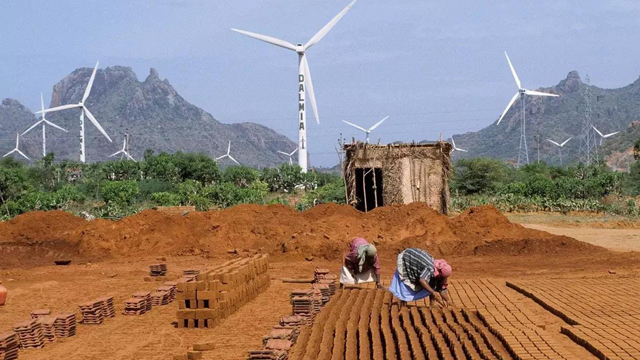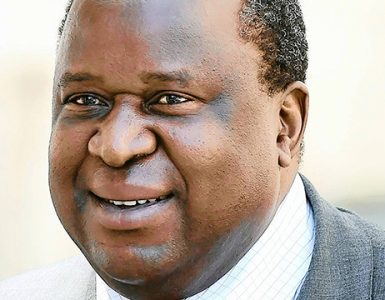Unlike in the North, in the South of the country there was a diverse land tenure system. Land was owned by communities, families, or private individuals and not subject to superior governor [3].The government had control only on land it occupied for its use, in essence land could only be acquired through talks with rightful land owners[4]. Private ownership had complete discretion and liberty to mortgage, sell, lease or retain their land without consulting the government. Therefore, private ownership was as a result sources of commerce. The Land Use Act aimed primarily on reducing unequal access to land resources and land. The Act aimed to decrease the high cost of land needed for merchandised agriculture and industrial estate. Unfettered access to land and its resources by Nigerians in a country heavily depending on minerals and agriculture would bring about needed economic growth[5].
To strengthen socioeconomic growth the Nigerian Agricultural and Cooperative Bank established direct and indirect grant loans to support farmers. Fisheries, dairy, beef, poultry, and food crops like cassava, maize, oil palm, rice and sorghum were given priority. The agricultural support policies of both the federal and state government aimed to increase agricultural output considerably as means of improving the standard of living and reducing malnutrition [6].Financial resources are distributed to assist farmers with pesticides, fertilisers and other essential agricultural inputs. As an additional contribution to agricultural production, at government expense land development schemes and tractor hire services were extended[7]. The Green Revolution government scheme was launched for the promotion of agriculture in the 1980s. This necessitated a National Council to coordinate the activities of the Green Revolution. The activities involved various organisations and ministries in developing agricultural processing, production, research and marketing[8].
To promote integrated rural development, the government established the National Agricultural Land Development Authority (NALDA) during the years 1992 to 2000.[9] The programme provided strategic public support for land development, promoting and assisting better use of Nigeria’s rural land and the available resources. To boost profitable employment opportunities for rural citizens, achieving food security through self-reliance and raising the standard of living of rural people[10]. To provide baseline data for agricultural related activities and services to land users the program embarked on activities such as land preparation, soil conservation, environmental issues, bush cleaning and soil testing and capacity. During its first year of operation alone, 28 000 of hectares was cleared and developed and more than 54 000 of hectares of land was acquired. Upon the end of the program, the number of active participants in the NALDA program was 6, 811 and a sum of 17, 820 hectares had been cultivated[11].
At state level the government established the Agricultural Development Programmes (ADP). ADPs has been one the government approach to alleviate widespread poverty and inequality in the country. The main objective of the ADP programmes was to increase farm income and food production for rural household. Nigeria’s agriculture growth rate in the first quarter of 2014 recorded at 5.53% and a decrease of 0.83% was recorded in the first quarter of 2015. Contribution of agriculture to GDP was 19.65% in the first quarter of 2014 and a slight growth of 0.14% in the first quarter of 2015[12]. In 2017 November third quarter, contribution of agriculture to GDP amounted to 29.15%, an increase compared to the third quarter of 2016 of 28.68% correspondingly, emphasising its increasing importance in the livelihoods of Nigerians[13]. Despite the growth in agriculture, the majority rural population is still living under extreme poverty.
Nigerian Agricultural Co-operative Bank (NACB) is an agricultural oriented financial institution to assist small scale farmers with credit and loan attainment. NACB programmes like the Farmers Credit Scheme (FCS) and Agricultural Credit Guarantee Scheme (ACGS) enabled an increase in crop production in the rural communities through financial support. Nigeria Incentive-Based Risk-Sharing System for Agricultural Lending (NIRSAL) approach tackles equally the agricultural financing value chains and the agricultural value chains. To boost the economic earning and the NIRSAL’s goal is to activate an agricultural industrialisation process through amplified processing and production[14].
Land Use Act has made it easy for attaining land by the government for public purposes. The decree considerably reduced court litigations over land and drastically minimised the burden of land compensation[15]. However, land management are serious problems in the country since the inception of the decree. Moreover, there has been problems in the implementation of the decree, and a number of failures of the Land Use Act include the exclusion of the rights of individuals or families to develop private layouts has steered the emergence of uncoordinated, disjointed and incoherent system of agricultural production in the economy[16].
The economy is further challenged by an infrastructure deficit and cannot meet the current demand and need for investment. Consequently, leading in logical and energy constraints to production and growth. Approximately more than 65% of farmers still use crude methods for farming. Storage facilities have not improved raising the cost of post-harvest handing resulting in economic losses. Access to markets has remained a recurrent challenge making it difficult to survive on farming solely for the majority indigenous population[17].
Absence of required maps for determining who owns what land, inheritance and gender issues and the assumption that the prerequisite national cadaster for any land tenure reform, were available. There has been lack of political will by each succeeding Federal Government to implement various provisions of the Act to make it succeed[18]. Further the State Governors and local Chairmen had been characterised in the operation of the Land Use Act as its use as a political weapon, selective administration of its provisions and lack of transparency. In 3 decades consequently only about 3% of the land in the country is covered by title deeds. This is a serious problem, by preventing absolute ownership by individuals one cannot guarantee ownership of the land by the poor[19].
The government failed to establish formalised models to support non-farming rural livelihoods related to agriculture such as distribution, processing and logistics. The youth has not been able to exploit extension services such as ICT for agriculture due to lack of government policy or support for such initiatives[20].
Equally serious, current information shows that female farmers are more marginalised and disadvantaged although they make significant contributions to food production and agriculture in the country. On average women contribute from anywhere from 50% to 80% of the labour needed. When compared to their male counterparts, women have limited access to productions resources even apart from their limited access to land ownership. Women recipients constitute just over 10% of land in the South and 4% of land ownership in the North[21]. Combinations of socio-cultural and socioeconomic factors have contributed to women marginalisation in accessing public goods and services.
Land plays an important role in agriculture production and is the farmers’ most essential asset. However, ownership of land in Nigeria and Africa frequently hinders with its use as an agriculture asset. To ensure availability, distribution and equitable allocation, the employment of land reform is needed. In 1978 the Land Use Act was promulgated with aims to make land accessible to all Nigerians. But objectives of the Act have not fully materialised due to various problems associated with it. Policies that can raise incomes of farmers and productivity are crucial for any land reform to become an important instrument for equalising access to land. Therefore, failures of the county’s land reform system embodied on the Act pleas for its review.
Following cautious observation of Nigeria’s land reform system, this paper recommends that the possibilities of colonising unused arable land for the benefit of needy farmers should be explored. The masses should be continuously educated about the laws and procedures as well as the relationship between the state and local government. The objectives of the reform and farmers to should be further strengthened to rise the access to land for agriculture drives. Whether of a freehold or leasehold type, defined land ownership is vital for enhancing rural producers’ access to credit, promoting their capabilities and largely improving their production. More initiatives such as the Women in Agriculture are needed in order to take advantage of agriculture to improve rural livelihoods, particularly for marginalised groups like women, children and youth.
[1] Kuma, S 2017. Land Policy and Land Diversity System in Nigeria, In Emerging Issues in Urban land Use and Development in Nigeria, M.B. Nuhu, M.T.A. Ajayi, I.A. Olatunji and N.B. Udoekanem (eds), pp.: 1-18, Abuja University Press: Abuja. Available At: https://researchgate.net/ [Last Accessed: 15 April 2018].
[2] Matthew, E.N. 2016. ‘Impact of the Nigerian Land Use Act on Economic Development in the Country’, Administrio, Vol. 8, No. 2, pp.: 117-128. Available At: http://journals.univ-danubius.ro/ [Last Accessed: 27 May 2018].
[3] Otubu, A. n.d. Land Use Act and Land Ownership Debate in Nigeria: Resolving the Impasse, on the Academia Website, viewed on 15 April 2018, from http://academia.edu/.
[4] Matthew, E.N. 2016. ‘Impact of the Nigerian Land Use Act on Economic Development in the Country’, ibid.
[5] Emeka, N., Famobuwa, O.S. and Chinemeze, I. 2017. ‘Land Reform System and its Implication on Agricultural Production in Nigeria’, University Journal of Agriculture Research, Vol. 5, No. 6, pp.:338-343. Available At: http://www.hrpub.org/download/20171030/UJAR4-10410070.pdf [Last Accessed: 27 May 2018].
[6] FMARD 2018. The Green Alternative, on the Federal Ministry of Agriculture and Rural Development Website, viewed on 14 February 2018, from https://fmard.gov.ng/.
[7] FMARD 2018. The Green Alternative, ibid.
[8] FAO 2017. FAO Country Programming Framework: Federal Republic of Nigeria, Food Agriculture Organisation: Rome. Available At: http://fao.org/ [Last Accessed: 14 February 2018].
[9] FMARD 2018. Staple Crop Processing Zone, on the Federal Ministry of Agriculture and Rural Development Website, viewed on 14 February 2018, from https://fmard.gov.ng/.
[10] Akinsola, O.D. and Oladele, O.I. 2015. National Agricultural Land Development Authority’s (NALDA) Intervention Programme in Nigerian Agriculture: Lessons and Challenges, on the Research Gate Website, viewed 14 February 2018, from https://researchgate.net/.
[11] Emeka, N. et al. 2017. ‘Land Reform System and its Implication on Agricultural Production in Nigeria’, ibid.
[12] NBS 2015. Nigerian Gross Domestic Product Report: Quarter One 2-15, on the National Bureau of Statistics Website, viewed on 16 February 2018, from http://nigerianstat.gov.ng/
[13] NBS 2017. Nigerian Gross Domestic Product Report: Quarter 3 2016, on the National Bureau of Statistics Website, viewed on 16 February 2018, from http://nigerianstat.gov.ng/.
[14] Matthew, E.N. 2016. ‘Impact of the Nigerian Land Use Act on Economic Development in the Country’, ibid
[15] Kuma, S 2017. Land Policy and Land Diversity System in Nigeria, ibid.
[16] Emeka, N. et al. 2017. ‘Land Reform System and its Implication on Agricultural Production in Nigeria’, ibid
[17] Oxfam 2017. Inequality in Nigeria: Exploring the Drivers, on the Oxfam Website, viewed on 14 February 2018, from https://oxfam.org/.
[18] Akinsola, O.D. and Oladele, O.I. 2015. NALDA’s Intervention Programme in Nigerian Agriculture: Lessons and Challenges, ibid.
[19] Kuma, S 2017. Land Policy and Land Diversity System in Nigeria, ibid.
[20] FAO 2017. FAO Country Programming Framework: Federal Republic of Nigeria, ibid.
[21] Nwamaka, O. 2016. Women in Nigeria Make Up Forty Nine Percent of the Population, But Only Four Percent of Lawmakers, on Nwamaka’s Blogsite, viewed on 15 April 2018, from https://ogbonnanwamaka.wordpress.com/.





























